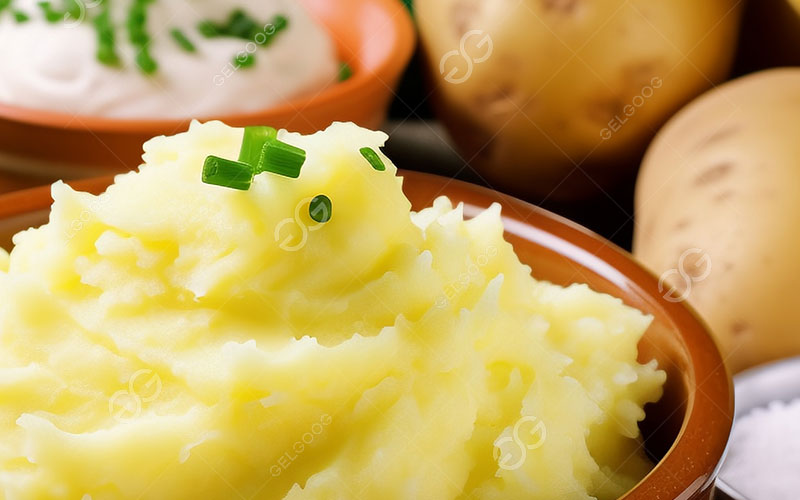Mashed potatoes are a food with a delicate texture and pure flavor. They can be used as a side dish on the family table and are also widely used in frozen foods, restaurant chains and other fields. So how to make mashed potatoes from scratch?

1. Selecting Ingredients
The first step in making high-quality mashed potatoes is to select the potatoes. Remove potatoes that are rotten, sprouting, undersized, or have diseased spots. High-quality potatoes should have a smooth surface, no obvious mechanical damage, and a moderate starch content to ensure the flavor and texture of the mashed potatoes.
2. Cleaning and Peeling
The selected potatoes need to be thoroughly washed to remove dirt, sand, and other impurities. Factories typically use drum or brush washers, which combine high-pressure spraying with brush abrasion to ensure a clean and hygienic surface.
3. Cutting into small pieces
Whole potatoes are large, so steaming them directly is not only time-consuming but can also result in uneven heating. Therefore, after peeling, the potatoes are cut into uniform small pieces using a potato dicer. This shortens steaming time, reduces energy consumption, and allows for smoother grinding.
4. Steaming
The cut potatoes enter the steaming equipment to soften them.
Temperature control: Generally maintained at 98-100°C to ensure the potatoes are cooked thoroughly but not overly mushy.
Cooking time: Typically 15-25 minutes, depending on the size of the potatoes and the type of potato.
5. Grinding into Puree
The cooked potatoes are then fed into a potato masher, where they are processed into a fine puree using a combination of screw pressing, blade cutting, or mesh extrusion. For products requiring a finer texture, multiple stages of grinding are available.
6. Post-Processing (Optional)
In the factory, ground mashed potatoes can be packaged directly for ready-to-eat consumption or quickly frozen to create frozen mashed potatoes for easy storage, transportation, and subsequent processing. Quick freezing typically uses a fluidized bed freezer, rapidly reducing the temperature to below -18°C to lock in the flavor and nutrients.
